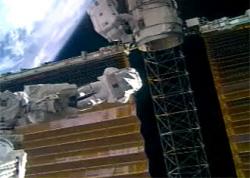 Mission Specialists Robert Curbeam and Christer Fuglesang have gone back outside the International Space Station to try and get its troublesome solar arrays to retract properly. Imagine a big fold out map, that’s supposed to go back on exactly the same folds. It’s not folding back up again, and nothing they tried from inside fixed it. Time to do this hands on.
Mission Specialists Robert Curbeam and Christer Fuglesang have gone back outside the International Space Station to try and get its troublesome solar arrays to retract properly. Imagine a big fold out map, that’s supposed to go back on exactly the same folds. It’s not folding back up again, and nothing they tried from inside fixed it. Time to do this hands on.
Curbeam and Fuglesang stepped out around 2pm EST, and they should get back in around 8:25 pm EST, after more than six hours in space.
Continue reading “Astronauts Working to Fold Arrays”
What’s Up this Week: December 18 – December 24, 2006
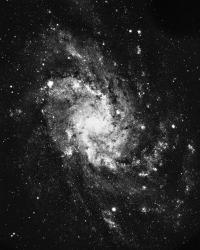 Greetings, fellow SkyWatchers! For most of us, the longest night of the year is fast approaching… Why not enjoy solstice with an in-depth look at an amazing galaxy? For those of you who enjoyed the great display the Geminids produced last week, there will also be two more meteor showers to add to the celestial show! So grab your binoculars, set up your scopes and let’s head out into the night because…
Greetings, fellow SkyWatchers! For most of us, the longest night of the year is fast approaching… Why not enjoy solstice with an in-depth look at an amazing galaxy? For those of you who enjoyed the great display the Geminids produced last week, there will also be two more meteor showers to add to the celestial show! So grab your binoculars, set up your scopes and let’s head out into the night because…
Here’s what’s up!
Continue reading “What’s Up this Week: December 18 – December 24, 2006”
How Multiple Star Systems Come Together
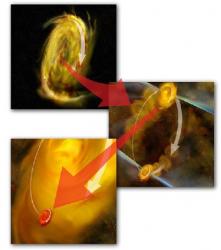 Multiple star systems are a staple of science fiction. The heroes stumble across a parched desert searching for some escape from the three suns burning in the sky. As they struggle for their lives, perhaps our protagonists might take a moment to consider the chain of astronomical events that brought them to this moment.
Multiple star systems are a staple of science fiction. The heroes stumble across a parched desert searching for some escape from the three suns burning in the sky. As they struggle for their lives, perhaps our protagonists might take a moment to consider the chain of astronomical events that brought them to this moment.
Continue reading “How Multiple Star Systems Come Together”
Spitzer Looks Right Back to the First Stars
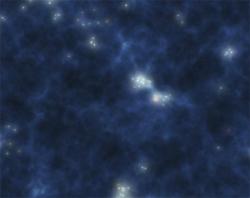 After the Big Bang there were the first stars. Astronomers think these monsters contained more than 1,000 times the mass of our Sun, and poured out torrents of radiation. They didn’t last long, but they began the cycles of star birth, death, and detonation that helped to create the Universe as we see it today; as well as all the heavier elements.
After the Big Bang there were the first stars. Astronomers think these monsters contained more than 1,000 times the mass of our Sun, and poured out torrents of radiation. They didn’t last long, but they began the cycles of star birth, death, and detonation that helped to create the Universe as we see it today; as well as all the heavier elements.
Continue reading “Spitzer Looks Right Back to the First Stars”
What Else Could Be Spewing Out of Enceladus?
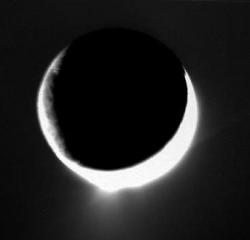 One of the biggest space news stories of 2006 was the Cassini’s discovery that water ice was spraying out the bottom of Saturn’s moon Enceladus. It could be that the tiny moon is under such gravitational flexing from Saturn that it refuses to freeze solid. Researchers then went on to propose that this spray of ice is actually regenerating Saturn’s E ring.
One of the biggest space news stories of 2006 was the Cassini’s discovery that water ice was spraying out the bottom of Saturn’s moon Enceladus. It could be that the tiny moon is under such gravitational flexing from Saturn that it refuses to freeze solid. Researchers then went on to propose that this spray of ice is actually regenerating Saturn’s E ring.
Continue reading “What Else Could Be Spewing Out of Enceladus?”
GoogleNASA
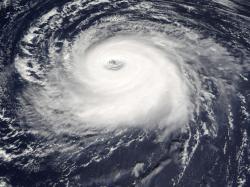 Now here’s an interesting alliance. Google and NASA Ames announced today that they’ll be forming a new partnership to work together on several space-related projects.
Now here’s an interesting alliance. Google and NASA Ames announced today that they’ll be forming a new partnership to work together on several space-related projects.
Continue reading “GoogleNASA”
Star Formation Factory
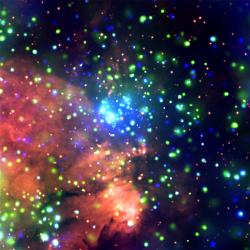 You’re looking at a star forming region known as W3. It’s located about 6,000 light-years from Earth in the Perseus arm of the Milky Way. It’s just a small part of a much larger molecular cloud complex called the W4 superbubble (not pictured here), which extends about 100 light-years across. As that superbubble expands, it’s giving these clouds of dust and gas just the bump they need to collapse and get down to the business of furious star formation.
You’re looking at a star forming region known as W3. It’s located about 6,000 light-years from Earth in the Perseus arm of the Milky Way. It’s just a small part of a much larger molecular cloud complex called the W4 superbubble (not pictured here), which extends about 100 light-years across. As that superbubble expands, it’s giving these clouds of dust and gas just the bump they need to collapse and get down to the business of furious star formation.
Continue reading “Star Formation Factory”
Tag an Asteroid, Win a Prize
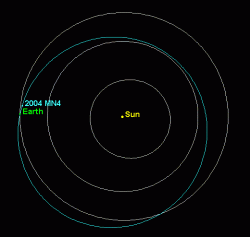 The Planetary Society is offering a $50,000 prize for the best plan to reach out an put a tracking beacon on near-Earth asteroid Apophis (AKA 2004 MN4). Apophis is approximately 400 metres across, and it’s expected to pass very close to the Earth in 2029. And on that pass, it could receive a gravitational bump to its orbit that could make it even more dangerous in 2036. With better tracking, scientists will have a much better idea if Apophis really is a risk to Earth. The competition ends August 31, 2007.
The Planetary Society is offering a $50,000 prize for the best plan to reach out an put a tracking beacon on near-Earth asteroid Apophis (AKA 2004 MN4). Apophis is approximately 400 metres across, and it’s expected to pass very close to the Earth in 2029. And on that pass, it could receive a gravitational bump to its orbit that could make it even more dangerous in 2036. With better tracking, scientists will have a much better idea if Apophis really is a risk to Earth. The competition ends August 31, 2007.
Continue reading “Tag an Asteroid, Win a Prize”
Year in Space 2007 Calendar Winner
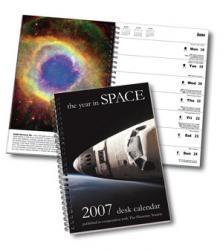 I’ve done the draw, and the lucky winner of a free copy of the Year in Space 2007 calendar is David Williams from Fairbanks Alaska. Congratulations David, a copy of the calendar is on its way now.
I’ve done the draw, and the lucky winner of a free copy of the Year in Space 2007 calendar is David Williams from Fairbanks Alaska. Congratulations David, a copy of the calendar is on its way now.
Continue reading “Year in Space 2007 Calendar Winner”
Send Your Questions to the Astronauts
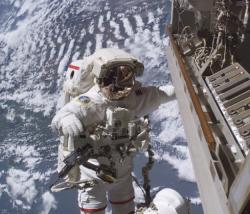 ABC News just let me know that they’re going to be taking video questions from the public to get answered by astronauts currently on board the space shuttle Discovery and the International Space Station. How cool is that? This is part of a show they do called Be Seen, Be Heard.
ABC News just let me know that they’re going to be taking video questions from the public to get answered by astronauts currently on board the space shuttle Discovery and the International Space Station. How cool is that? This is part of a show they do called Be Seen, Be Heard.
Continue reading “Send Your Questions to the Astronauts”
